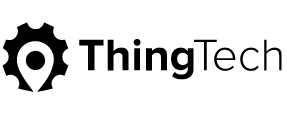Field Service Managers are Getting Liftoff With These 5 IoT Efficiency Boosters
Profitability is at the heart of business. To reach profitability you must develop an operating model that works. As if that’s not hard enough, disruptive technologies like the IoT are causing rapid change across most industries, making this goal a moving target. One of two things need to happen if your operating model isn’t effective. Either set a new course by creating a new operating model or find a better way to close the gap between strategy and execution.
The fact that IoT adopters are doing more with the IoT should be a signal to companies still waiting to get started. Operations managers in the industries we serve are using the IoT to improve efficiencies in many ways. The IoT does more than track things and cut costs. At its best the IoT allows real-time operational data to flow freely across all levels and departments of your organization, adding intelligence and automation to the technology and processes that connects people.
Understanding where and how the IoT can improve your business model is a key to digital transformation. Here’s our cheat code for IoT-powered field service―a quick summary of the five key areas of efficiency that will improve five different departments with real-time data and analytics.
Driver Efficiency
What criteria does your company use to define good driving behavior? And how do you measure results? No matter what size fleet you’re running, you’ll find there’s no better cure for low visibility, and no better tool for driver productivity, than the IoT. GPS fleet tracking puts you inside the vehicle with your driver by providing real-time data on location, speed, idling, harsh braking, long stops, off-hour use, and other useful metrics. All this data can then be analyzed and combined into a driver scorecard, as well as developed into an efficiency model that aligns overall performance with what’s needed to accomplish company goals.
Sales Efficiency
It’s never been easier to determine the status of work orders, how many jobs were completed in a day, and how many jobs could be completed in a day with the current assets, vehicles, workers, parts on hand. GPS fleet tracking, enterprise asset management (EAM), and field service mobile applications are three IoT-enabled technologies that combine to provide complete visibility into assets [location, health, status, utilization], parts and labor. Knowing how each asset and activity impacts the bottom line will springboard your company towards financial/profitability modeling, predictive sales forecasting, headcount planning, and other massive competitive advantages.
Service Efficiency
GPS fleet tracking paired with field service mobile applications can change how quickly you’re aware of when service workers enter and exit a job site, how long jobs take, what time jobs start, and what time jobs are completed. And companies that integrate this data with an EAM system can autonomously trigger a service call when an asset needs repaired or replaced.
Asset Efficiency
By any standard, emergency service calls, high repair costs, and unexpected breakdowns are toxic to any operating model. Not only that, lacking awareness of asset performance and conditions puts your customers at risk. The IoT can help you to achieve predictive maintenance schedules, faster response to asset health anomalies, asset utilization tracking and prediction, and accurate historical and forecasted maintenance cost metrics.
Financial Efficiency
Poor recordkeeping and/or a lack of asset data is a root cause of inefficient capital planning, difficulty managing budgeting, inaccurate lease versus buy decision making. These decisions affect sales and service, but in companies that have adopted IoT, it’s traditionally been operations managers who drive digital transformation across the organization. As you develop operational efficiencies with real-time data and analytics, you’ll find that the finance team is better equipped to centralize record keeping, make accurate calculations of total cost of ownership, and improve long-term capital planning.
Adopting the IoT to improve these five areas of efficiency will help you adapt to changes within your industry with agility, future-proof your technology infrastructure, and understand the relationship between operational efficiency and these key areas of your business.
Collecting data isn’t enough. You need to understand and make use of it. To learn more about IoT-enabled field service solutions, contact us to schedule a free consultation.

